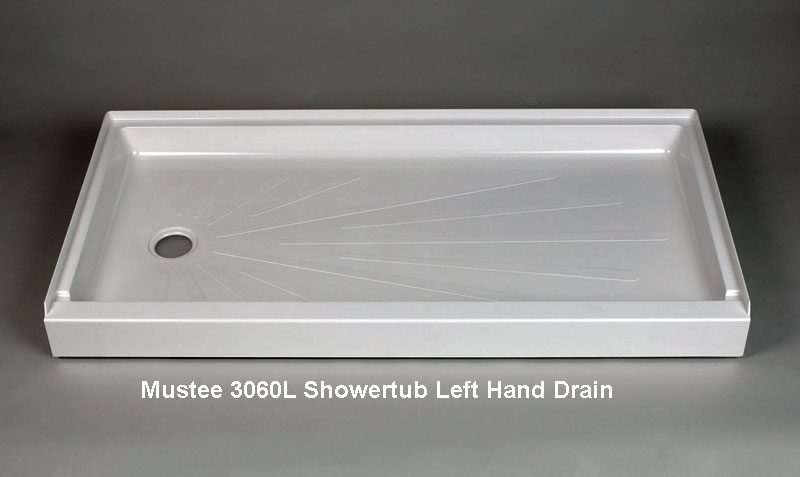I'm doing a tub to shower conversion. Code seems to be saying that I have to install a 2" drain pipe rather than just use an adapter to go 2" to 1.5" with the existing tub drain pipe. Given this, I have to remove all of the 1.5" back to the 2" x 2" x 1.5" tee, and replace that tee with a 2" x 2" by 2" version. The top of that lower tee catches the sink drain water via another tee a foot or so above it. That upper tee top connects to a pipe that goes straight up as a vent to the roof. The bottom of the lower tee is a quick 90 degree turn then a quick 45 degree turn, then straight pipe to a main drain branch.
I can envision the sequence of connection to recreate the path from the straight main drain pipe, back to the shower drain as sequential series of primer/solvent connections right to left.. So that leaves us with the direct shower to drain path, completed via my new lower tee.
That takes us to building up from the top of the new lower tee. We add 1' or so of PVC 2" pipe, then a new sink tee, then the new sink branch. But now we get to the confusing part. If I now add another foot or so to the top of that upper sink tee, the top vent pipe is rock solid in place, and now, so is the new bottom assembly we just built. So not enough play to move the top vent up or bottom drain construct down (or a combination of both) enough to slide on a standard PVC 2" coupler.
Given this, some say to use a PVC repair coupling in this scenario, because they are rigid and favored by inspectors, but others say those are extremely hard to get installed correctly, to prevent leaks. Getting the primer and glue on right, given the slide distance needed, can be tricky. A second mentioned option is the Fernco Proflex Shielded coupling. But some say inspectors will fail rubber couplers in drain pipes.
So what do the pros typically do at a DWV intersections of PVC pipe, where both pipes cant move enough to install a standard coupler, but you want to pass a code inspection ?
If you have a part number, that would be excellent for 2" PVC.
And while we are on the topic, is the preferred shower drain type the solvent weld ones, or rubber seal slip on ones ?
Thanks
CJ
I can envision the sequence of connection to recreate the path from the straight main drain pipe, back to the shower drain as sequential series of primer/solvent connections right to left.. So that leaves us with the direct shower to drain path, completed via my new lower tee.
That takes us to building up from the top of the new lower tee. We add 1' or so of PVC 2" pipe, then a new sink tee, then the new sink branch. But now we get to the confusing part. If I now add another foot or so to the top of that upper sink tee, the top vent pipe is rock solid in place, and now, so is the new bottom assembly we just built. So not enough play to move the top vent up or bottom drain construct down (or a combination of both) enough to slide on a standard PVC 2" coupler.
Given this, some say to use a PVC repair coupling in this scenario, because they are rigid and favored by inspectors, but others say those are extremely hard to get installed correctly, to prevent leaks. Getting the primer and glue on right, given the slide distance needed, can be tricky. A second mentioned option is the Fernco Proflex Shielded coupling. But some say inspectors will fail rubber couplers in drain pipes.
So what do the pros typically do at a DWV intersections of PVC pipe, where both pipes cant move enough to install a standard coupler, but you want to pass a code inspection ?
If you have a part number, that would be excellent for 2" PVC.
And while we are on the topic, is the preferred shower drain type the solvent weld ones, or rubber seal slip on ones ?
Thanks
CJ

